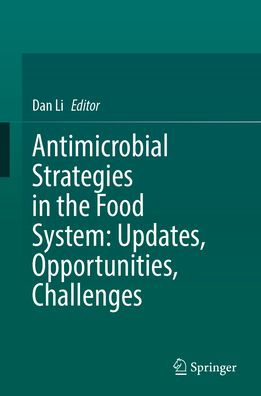Antimicrobial Strategies in the Food System: Updates, Opportunities, Challenges elucidates the established methods of this rapidly evolving field and introduces cutting-edge technologies such as urban/indoor agriculture. With an emphasis on detailing each step in the chain of food production, the text demonstrates how safety begins with primary production, from agriculture to aquaculture, and remains paramount through to packaging and handling. Developing informed and updated definitions of the terms “natural” and “sustainable,” this book addresses the fragilities of the current food system and establishes possibilities for future research and practice.
Antimicrobial Strategies in the Food System: Updates, Opportunities, Challenges elucidates the established methods of this rapidly evolving field and introduces cutting-edge technologies such as urban/indoor agriculture. With an emphasis on detailing each step in the chain of food production, the text demonstrates how safety begins with primary production, from agriculture to aquaculture, and remains paramount through to packaging and handling. Developing informed and updated definitions of the terms “natural” and “sustainable,” this book addresses the fragilities of the current food system and establishes possibilities for future research and practice.

Antimicrobial Strategies in the Food System: Updates, Opportunities, Challenges
558
Antimicrobial Strategies in the Food System: Updates, Opportunities, Challenges
558Hardcover

Product Details
| ISBN-13: | 9783031950551 |
|---|---|
| Publisher: | Springer Nature Switzerland |
| Publication date: | 09/06/2025 |
| Pages: | 558 |
| Product dimensions: | 6.10(w) x 9.25(h) x (d) |
